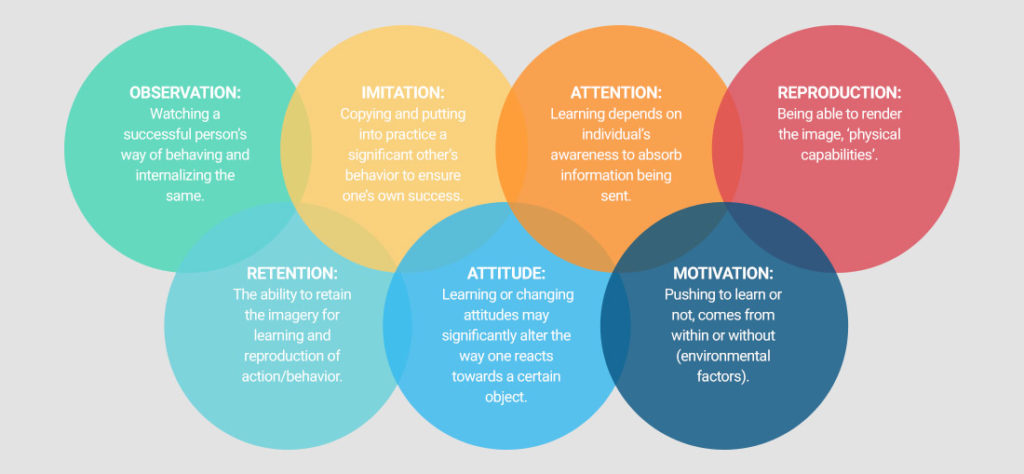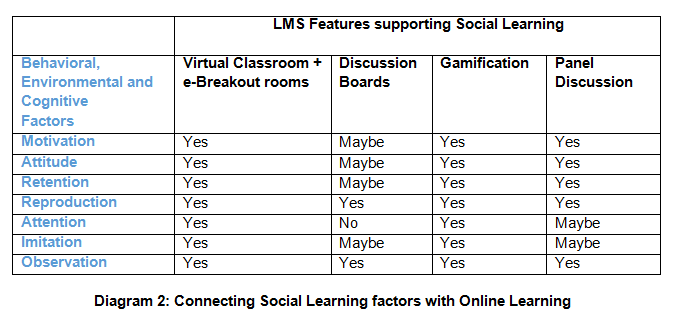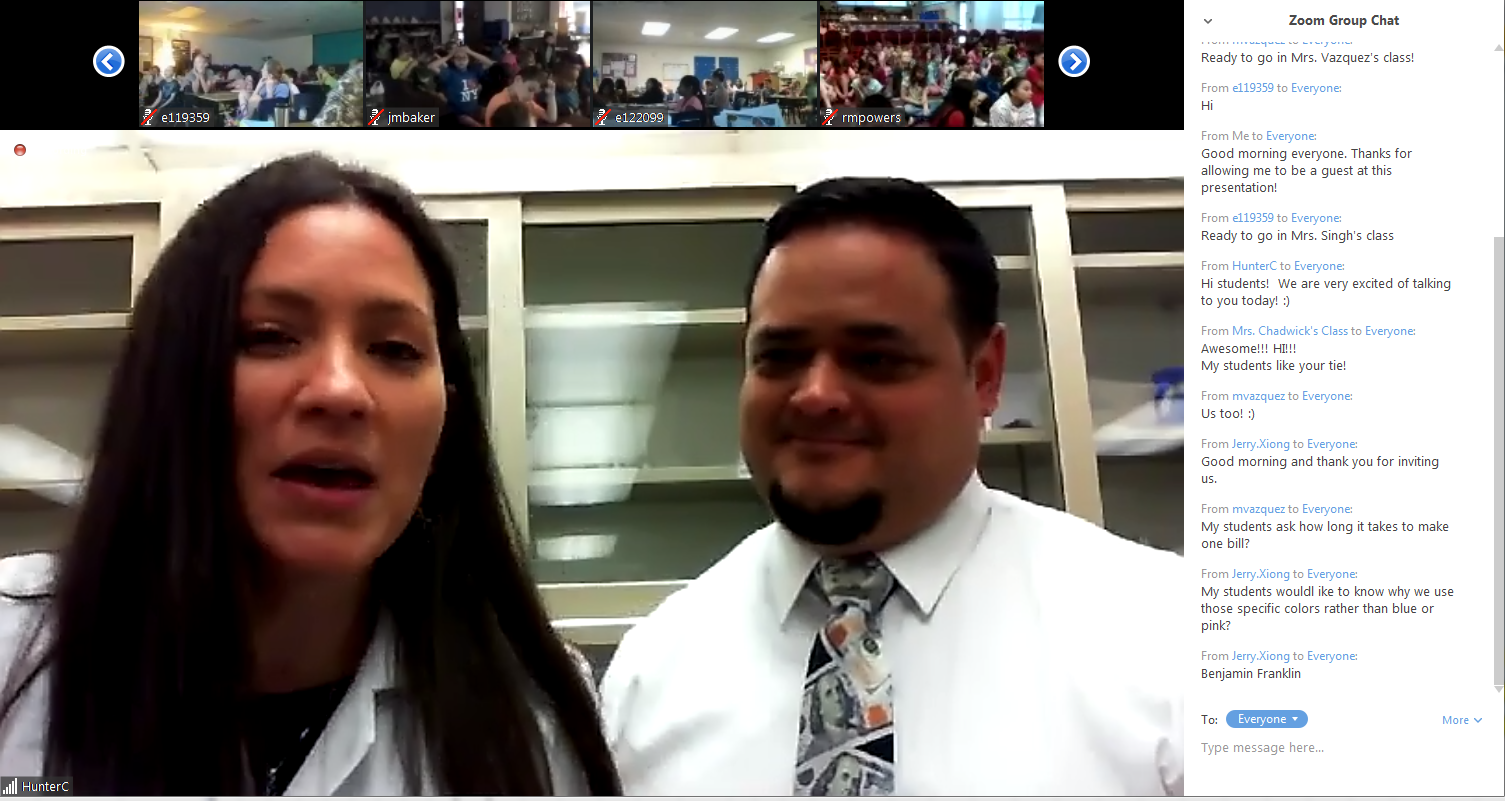It’s becoming more common to take online classes or blend traditional with online learning. Ila Mishra, a specialist in both LMS and virtual classrooms, has this informative explanation of how teachers can increase their social learning while teaching online classes:
Social Learning is defined as learning through observing behavior, attitudes, and outcomes of those behaviors. These help individuals to create a frame of reference of behaviors within themselves and prompt them to act. The main point of this theory is that social learning attributes human behavior to be an outcome of cognitive, behavioral and environmental influences (Bandura, 1977).
These cognitive, behavioral and environmental influences are:
Traditional classrooms were a conduit for social learning where students could sit together and collaborate on projects, group assignments, or make use of peer-to-peer learning opportunities. However, in the current educational environments where technology is used to enhance learning outcomes, educators have consciously allowed for and are making use of technology to facilitate learning online.
Institutions now use LMS software to deliver courses online. There are two ways of delivery of online learning which are through a) asynchronous or self-paced b) synchronous or instructor-led online courses. Some popular synchronous online learning delivery methods make use of best of both worlds (the traditional classroom and online learning courses) and ensure that social learning opportunities are amply present. In the context that there has been a year-on-year increase in students opting for online courses, it is imperative that social learning be facilitated while students are learning online.
Learning management systems allow for social learning to take place. How, you ask?
How Online Learning Supports Social Learning
Online learning supports and facilitates social learning through learning management systems (LMS) which are used by educational institutes. These LMSs may have the following features:
- Virtual Classroom + e-Breakout rooms
- Discussion Boards
- Gamification in a virtual classroom
- Panel Discussion
Virtual Classroom + e-Breakout rooms
The virtual classroom is a live and secure video that is streamed on an LMS, which helps students come on to the platform together – thereby allowing them to interact with each other as they would in a real classroom.
e-Breakout rooms allow the teachers to break-up the entire class into various groups for online project work or discussion. Smaller groups enable more effective study and learning, online. In breakout rooms, the teacher may or may not supervise the conversations and students may interact over project assignments, classwork and have discussions as a group.
Discussion Boards
Group discussions are always encouraged as a part of social learning. Online discussion boards help groups in communicating with each other asynchronously. There are many benefits of such online boards, for example:
- Post class discussions may continue on these boards facilitating interaction and in-depth conversations online.
- Notifications are instantly delivered when people are interacting on the board so that students are up-to-date with their discussion and can join in.
- Helps create a network online/offline – there have been instances where students who have met online for educational collaboration have connected in the real world to further their common educational interests and projects.
Gamification in a virtual classroom
Gamification is one of the best methods to increase online peer connectivity and social learning. Games are a way of building social skills, teamwork habits, discipline amongst others. How?
Adding games to the online learning environment ensures the following:
- Play with learners located anywhere in the world
- Check the scores and keep competing
- Talk and discuss strategies for winning/playing
- Stimulate creativity and provide immediate feedback
- Developing critical thinking
Gamification is a live application of some learning theories such as social learning, collaborative learning, active learning, problem-targeted learning and constructivist theories. Still, in its infancy, gamification is applied by many virtual tutors by applying workarounds because most virtual classroom software packages do not contain gamification elements.
Panel Discussion
Host an online panel discussion by having some celebrity/community/subject expert for the benefit of the students. This is an imitation of symposiums, panel discussions that happen in a physical environment. It adds value and promotes social learning – as learners can freely interact with experienced panelists. Additionally, live Q&A sessions and live webinars, knowledge share sessions, are some methods in which social interaction may be increased online.
Social Learning through Online Learning …connecting the dots
Summarizing how each feature in your LMS may impact social learning elements is a chart representation outlining the possibility of the same. Rest assured, online learning will impact social learning.
About the author: Ila Mishra is a Content Specialist at WizIQ an EdTech company that offers an LMS and Virtual Classroom platform to businesses and educators. She writes about online learning and educational technology.
Jacqui Murray has been teaching K-18 technology for 30 years. She is the editor/author of over a hundred tech ed resources including a K-12 technology curriculum, K-8 keyboard curriculum, K-8 Digital Citizenship curriculum. She is an adjunct professor in tech ed, Master Teacher, webmaster for four blogs, an Amazon Vine Voice, CSTA presentation reviewer, freelance journalist on tech ed topics, contributor to NEA Today, and author of the tech thrillers, To Hunt a Sub and Twenty-four Days. You can find her resources at Structured Learning.






































